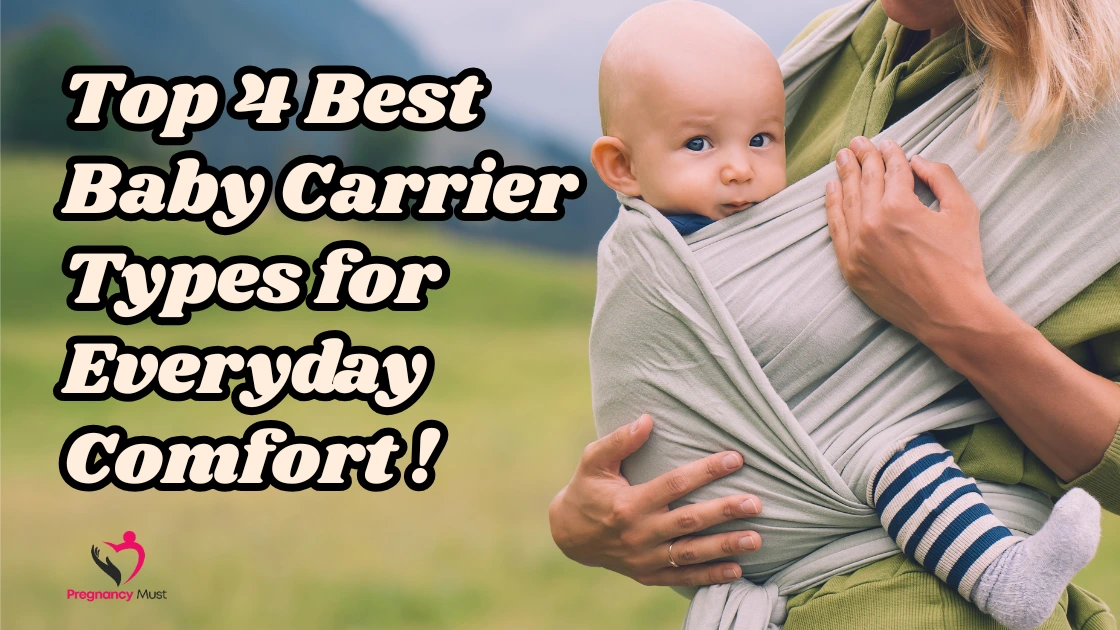Searching for the best baby carrier? You’re in the right place. From snuggling your newborn during quiet mornings to carrying your toddler through busy afternoons, the right baby carrier offers freedom, connection, and support at every stage.
Table of Contents
Why the Best Baby Carrier Can Make All the Difference
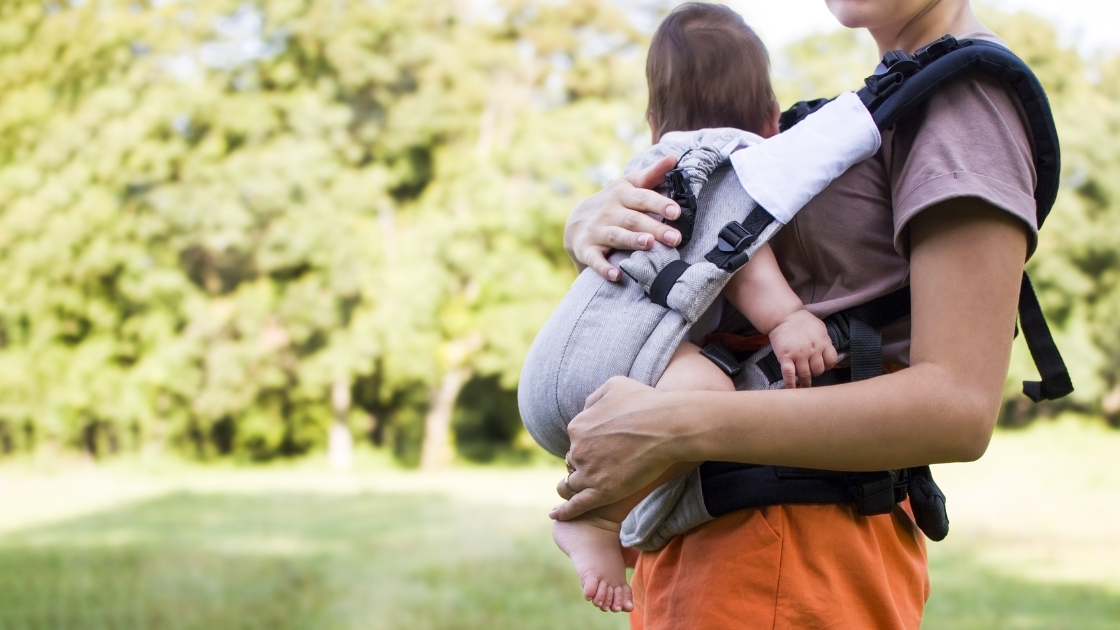
Choosing the best baby carrier isn’t just about convenience—it’s about comfort, health, and bonding. With the right support, a carrier becomes your secret weapon for daily errands, travel, and quiet moments at home. It nurtures your baby while giving you the flexibility to keep moving.
Benefits of Using the Best Baby Carrier
Freedom to move
Keep your hands free while staying close to your child. Whether you’re grocery shopping, doing laundry, or walking in the park, a great baby carrier frees your hands while still nurturing your baby. It supports an active lifestyle and makes multitasking with a little one far more manageable.
Supports bonding
Promotes emotional security for both baby and parent. Close physical contact helps your baby feel safe, heard, and loved. For parents, it deepens emotional connection and awareness of the baby’s needs. Baby carriers allow constant touch, eye contact, and heartbeat awareness—all key to building trust and attachment.
Improves baby sleep
Carried babies sleep better, longer, and more often. The gentle rocking motion and closeness to your body mimic the womb, helping babies settle faster. Many parents find that baby wearing quickly becomes a reliable sleep cue, especially during nap transitions or growth spurts.
Helps with colic and reflux
Upright positioning soothes digestion. Holding your baby upright after feeds can ease gas and reduce reflux symptoms. Baby carriers designed for vertical support give babies the comfort they need to process digestion more comfortably, especially during their fussy hours.
Back and hip-friendly design
Especially when ergonomically aligned. The best baby carriers support your baby’s natural hip position and reduce pressure on your spine. With proper alignment, they prevent backaches for you and ensure your baby’s hips develop safely, an important feature for both comfort and health.
Types of Baby Carriers and Their Strengths
Baby Wrap Carrier
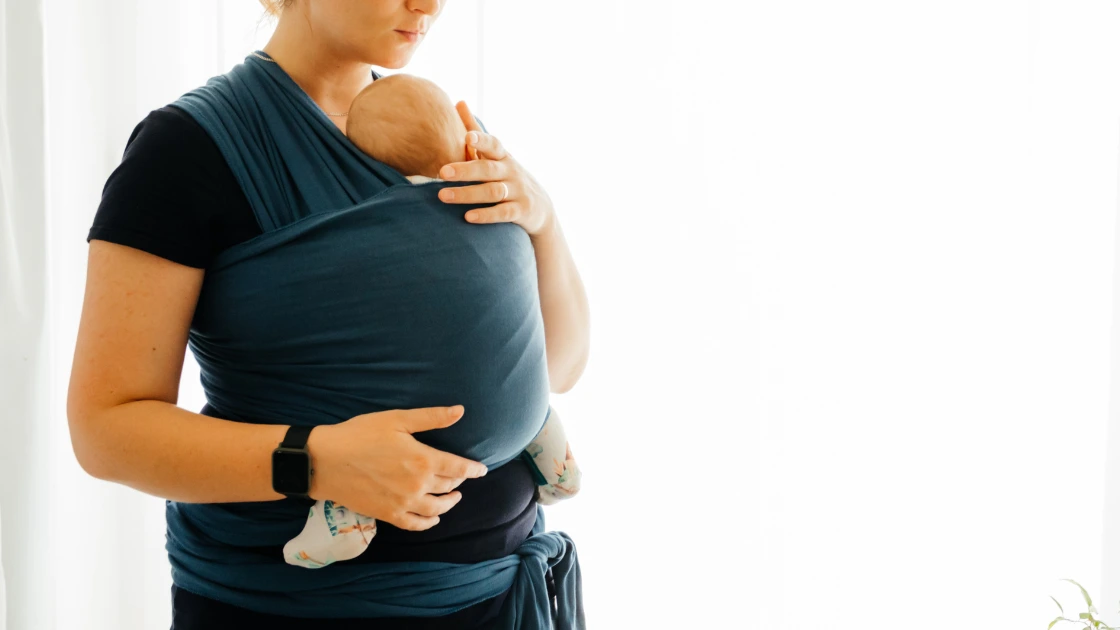
Soft, cozy, and simply snugly. The baby wrap carrier is a favorite for newborns and loved by moms. It offers skin-to-skin contact and the feeling of a womb that calms the fussiest of babies. Though it takes some practice to tie, it allows a personalized fit and evenly distributes weight, making it surprisingly comfortable. It’s ideal for short walks, cuddling at home, and discreet nursing. Many parents love how compact and breathable it is, fitting easily into a diaper bag. Plus, it supports the baby’s natural posture while keeping your hands free, which is a win for multitasking throughout the day. It is a favorite for newborns. It provides skin-to-skin contact and a womb-like feeling that soothes even the fussiest babies. Though it takes some practice to tie, it allows a personalized fit and evenly distributes weight, making it surprisingly comfortable. It’s ideal for short walks, cuddling at home, and discreet nursing.
Soft-Structured Carrier
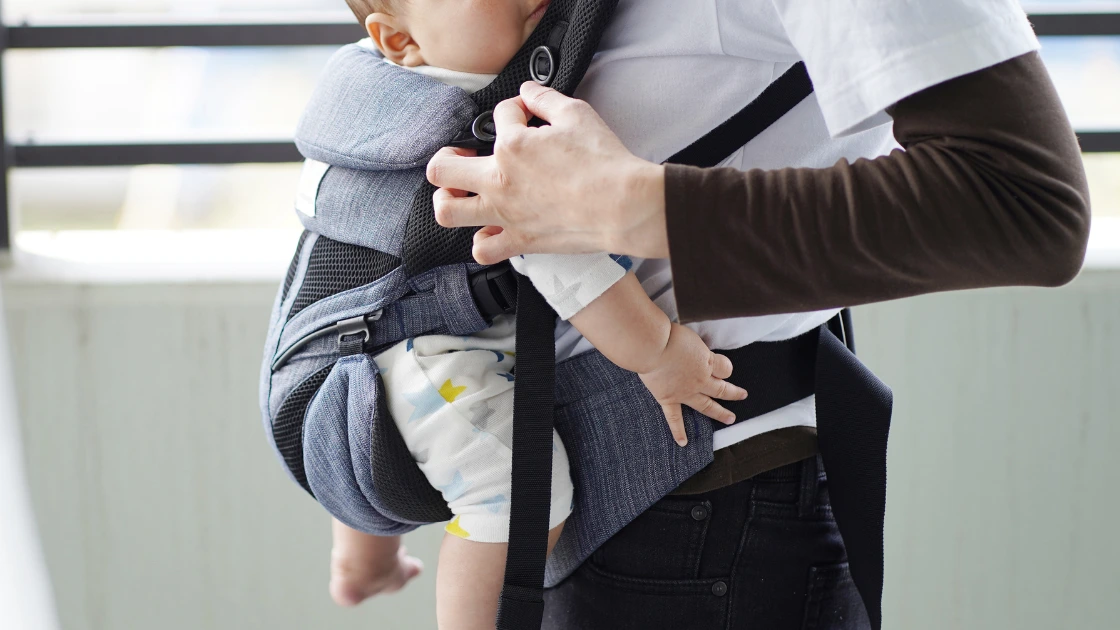
A Soft-Structured Carrier (SSC) is a popular choice among parents as the best of both worlds when it comes to comfort and practicality. With adjustable buckles, cushioned straps, and lumbar support, it’s meant for daylong use. And these carriers can accommodate children as they grow, allowing them to be worn in all three positions — front, back, and sometimes side. Ideal for both infants and toddlers, SSCs are your daily multitasking heroes. They’re also great for partners who want to take turns carrying. They have strong waistbands and secure fastenings, giving you peace of mind, and an ergonomic weight-bearing design to boot, helping to spread the weight load evenly around your body. It is a choice for many parents who want both comfort and convenience.” Equipped with adjustable buckles, padded straps, and lumbar support, it’s made to accommodate all-day wear. These carriers grow with your child and often support multiple positions: front, back, and even side. Ideal for both infants and toddlers, SSCs are your daily multitasking heroes.
Infant Backpack Carrier

If you’re an active parent, the infant backpack carrier is your best friend. Built for outdoor use, it offers strong back support, storage compartments, and a high seated position for older babies. Whether you’re hiking, sightseeing, or heading to the park, this type of baby carrier makes sure both you and your toddler are comfortable for the journey. Most models come with adjustable harnesses, sunshades, and breathable mesh panels. Their framed structure helps distribute weight more efficiently, making them perfect for long walks. They’re bulkier than wraps or SSCs, but the utility is unmatched for adventures. The infant backpack carrier is your best friend. Built for outdoor use, it offers strong back support, storage compartments, and a high seated position for older babies. Whether you’re hiking, sightseeing, or heading to the park, this type of baby carrier makes sure both you and your toddler are comfortable for the journey.
Ring Sling
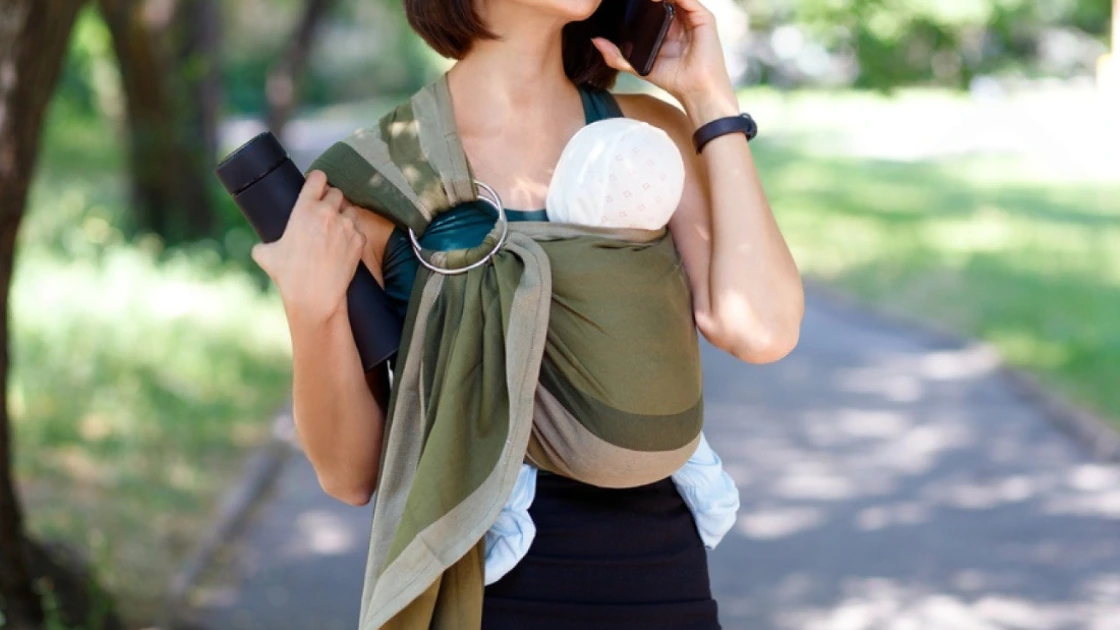
Sleek and simple, the ring sling is worn across one shoulder and tightened using two rings. It’s breathable, fashionable, and perfect for newborns and quick carriers. Easy to adjust and great for breastfeeding, it’s a favorite among minimalist parents. Use it for short outings or around the house, especially during those early months. The tail of the fabric can also double as a nursing cover or sunshade. While not ideal for long-duration wear due to the one-shoulder design, its speed and simplicity make it a must-have for errands or calming a restless baby quickly. The ring sling is worn across one shoulder and tightened using two rings. It’s breathable, fashionable, and perfect for newborns and quick carriers. Easy to adjust and great for breastfeeding, it’s a favorite among minimalist parents. Use it for short outings or around the house, especially during those early months.
Best Baby Carrier Picks by Age
Best Newborn Carrier
For the earliest weeks, newborns need neck support and gentle structure. The best newborn carrier should support the natural M-position of their legs and cradle their spine with breathable, soft fabric. Skin-to-skin wraps and carriers with newborn inserts work beautifully here. They not only help regulate your baby’s temperature but also offer a secure, womb-like environment that can ease the transition from belly to world. Many parents prefer wraps because they encourage bonding and comfort during cluster feeding or sleep regression phases.
Top Recommendation: Boba Wrap – soft, stretchy, and perfect for early bonding. – soft, stretchy, and perfect for early bonding.
Best Infant Carrier (3–12 Months)
As your baby becomes more active, the best infant carrier should provide stability and options for positioning. Adjustable seats and breathable materials keep both of you comfortable, while padded straps reduce pressure on your shoulders. Look for carriers that transition from inward- to outward-facing as your child grows. Safety harnesses and ergonomic seats are crucial for spine and hip development. The right infant carrier also keeps the baby engaged during outings and gives parents a break from arm strain.
Top Pick: Ergobaby Omni 360 – ergonomic, convertible, and parent-approved. – ergonomic, convertible, and parent-approved.
Best Toddler Carrier (12+ Months)
Toddlers are heavier and more mobile, so the best toddler carrier must include strong lumbar support and a larger weight capacity. Back-carry positions become more practical at this age, and your carrier should help you manage long walks and busy days without strain. Choose a model with sturdy waistbands, reinforced stitching, and adjustable height settings. Breathability and quick on/off design are key for convenience, especially during tantrums or travel. With the right baby carrier, adventures become smoother and more enjoyable.
Top Choice: Tula Toddler Carrier – durable, roomy, and great for travel. – durable, roomy, and great for travel.
What About Front-Facing Carriers?
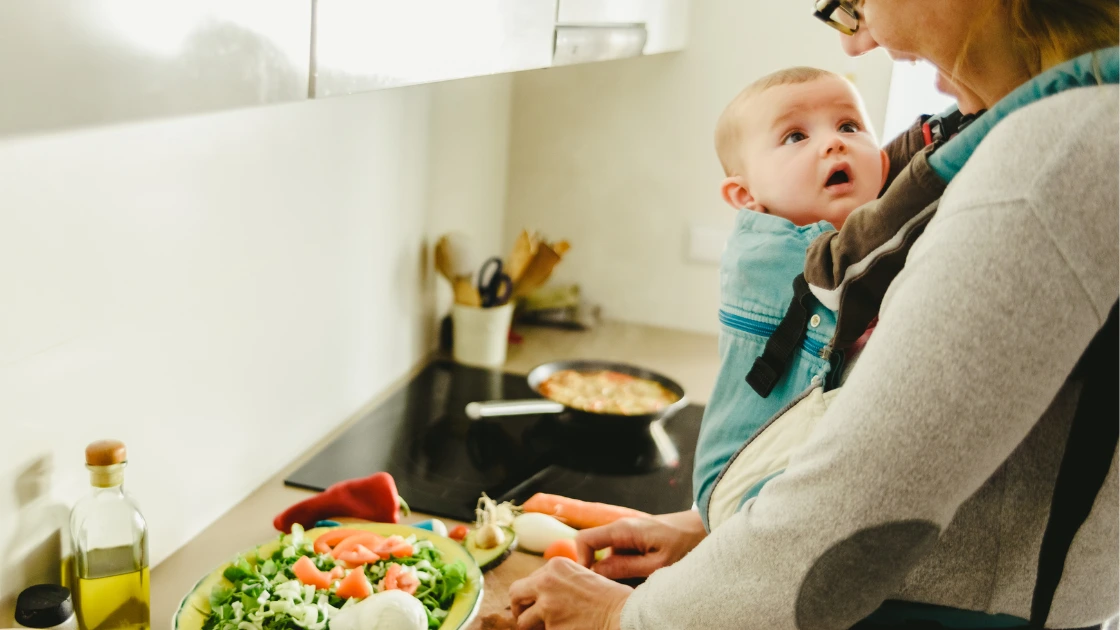
Curious babies love seeing the world, and a front-facing carrier makes that possible. Once your infant has proper head control (usually around 5–6 months), forward-facing can boost engagement. Just don’t overuse it—watch for signs of overstimulation and keep sessions short.
These carriers are especially helpful during outings, museum visits, or nature walks where there’s plenty to see. Forward-facing also encourages social interaction and development, giving babies a better view of facial expressions and the environment around them. However, it’s important to switch positions when your child seems tired or needs rest.
Fan Favorite: BabyBjörn Harmony – sleek, safe, and adjustable. – sleek, safe, and adjustable.
Choosing the Best Baby Carrier: Key Factors
Comfort First
Seek out padded shoulder straps, a broad waistband, and ergonomic shaping. Happy parent, happy baby. The baby carrier should also provide good weight distribution to avoid getting back pain, especially when you have to wear it for long periods of time. Some designs feature lumbar support or memory foam padding for added relief. Comfort is not a luxury; it is also necessary for regular use. Also, consider how breathable the material is for hot climates and if the carrier has padded leg openings for the baby. Comfort in small details makes long-term use pleasant for both of you.
Simple to Use
Buckles should click quickly, adjustments should be smooth, and you should be able to wear it solo. A user-friendly design means you spend less time struggling and more time bonding. Bonus points for baby carriers that allow one-hand adjustments, magnetic clasps, and intuitive strap systems that simplify everyday use. Also, look for instructional guides or videos included with your purchase. Clear, accessible support helps ensure you’re using the carrier correctly from day one.
Built to Grow
Adjustable seat width, multiple carrying positions, and toddler-ready support also add longevity to your investment. Look for styles that can grow with your baby, either by adding on newborn inserts or removing panels. Opting for a long-lasting carrier is a better value for money and will limit the need to upgrade as your baby grows into a toddler. Some models even feature a customizable headrest and extendable components that grow with your child’s height and weight, meaning they can be assured of hard-wearing comfort and support over time.
Easy to Clean
Life with kids gets messy. Washable, wipeable fabrics make maintenance simple. Check if the carrier is washable in the machine or needs spot cleaning. Darker colors and stain-resistant materials are practical choices for daily use. A low-maintenance carrier makes all the difference when you’re juggling spills, drool, and diaper leaks. Look for carriers that retain their shape after washing and feature quick-dry materials so you can get back to your routine faster.
Final Thoughts: Which Is the Best Baby Carrier for You?
The best baby carrier isn’t just the highest-rated—it’s the one that fits your lifestyle, your baby’s needs, and your comfort level. For newborn cuddles, go with a soft wrap. For daily errands and long-term use, a structured baby carrier is ideal. Planning hikes or adventures? The backpack carrier has your back. Want quick, breezy comfort? A ring sling is perfect.
Try a few. Test for comfort. Read reviews. Trust your instincts.
The best baby carrier is the one that helps you feel confident, hands-free, and close to your little one, no matter where life takes you.
Explore more on Pregnancy Must –
